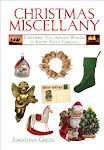 It has nothing to do with the sport of boxing, if that’s what you’re wondering. Boxing Day has been known by that name since the Middle Ages because of its connection to alms boxes.
It has nothing to do with the sport of boxing, if that’s what you’re wondering. Boxing Day has been known by that name since the Middle Ages because of its connection to alms boxes.It was on this day that alms boxes – the boxes placed in churches to collect money for the needy – would be opened by the priests and the money, given by the better-off parishioners, distributed to the poor of the parish. This was once known as the ‘dole of the Christmas box’. It led, in time, to the practice of giving those who had provided a service over the previous year – such as delivering your milk or mail – a seasonal thank-you in the form of a ‘Christmas box’, hence, Boxing Day.
This type of collecting box was first brought to Britain by the Romans, but rather than distribute the money to the poor, the Romans used it to pay for the games which took place during the winter celebrations.
After the sixteenth century it was common practice for apprentices and household servants to ask their masters (and even their masters’ customers) for money at Christmas time. Any gifts of money they received were placed inside an earthenware ‘box’ – which looked more like a piggy bank, complete with a slit in the top – which was then broken open on 26 December.
Didn't get 'TWAS - The Krampus Night Before Christmas for Christmas? Don't worry, you can buy it for yourself here!
And if you missed 'TWAS - The Roleplaying Game Before Christmas on Kickstarter, you can place a late pledge here!
To find out more about the festive season and its many traditions, order your copy of the Chrismologist's Christmas Explained: Robins, Kings and Brussel Sprouts today!
The book is also available in the United States as Christmas Miscellany: Everything You Ever Wanted to Know About Christmas.
































